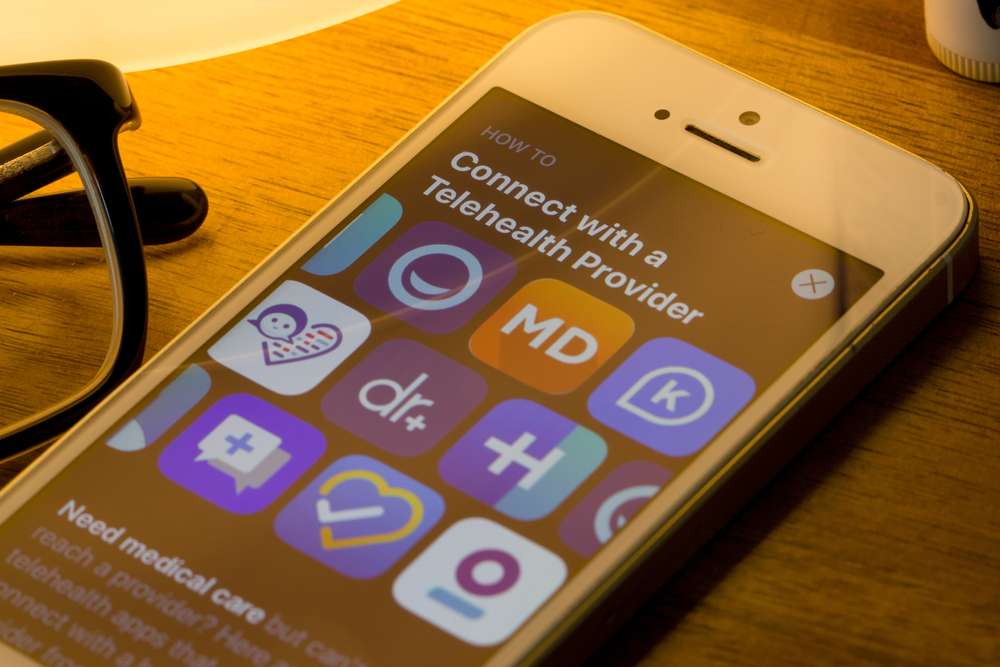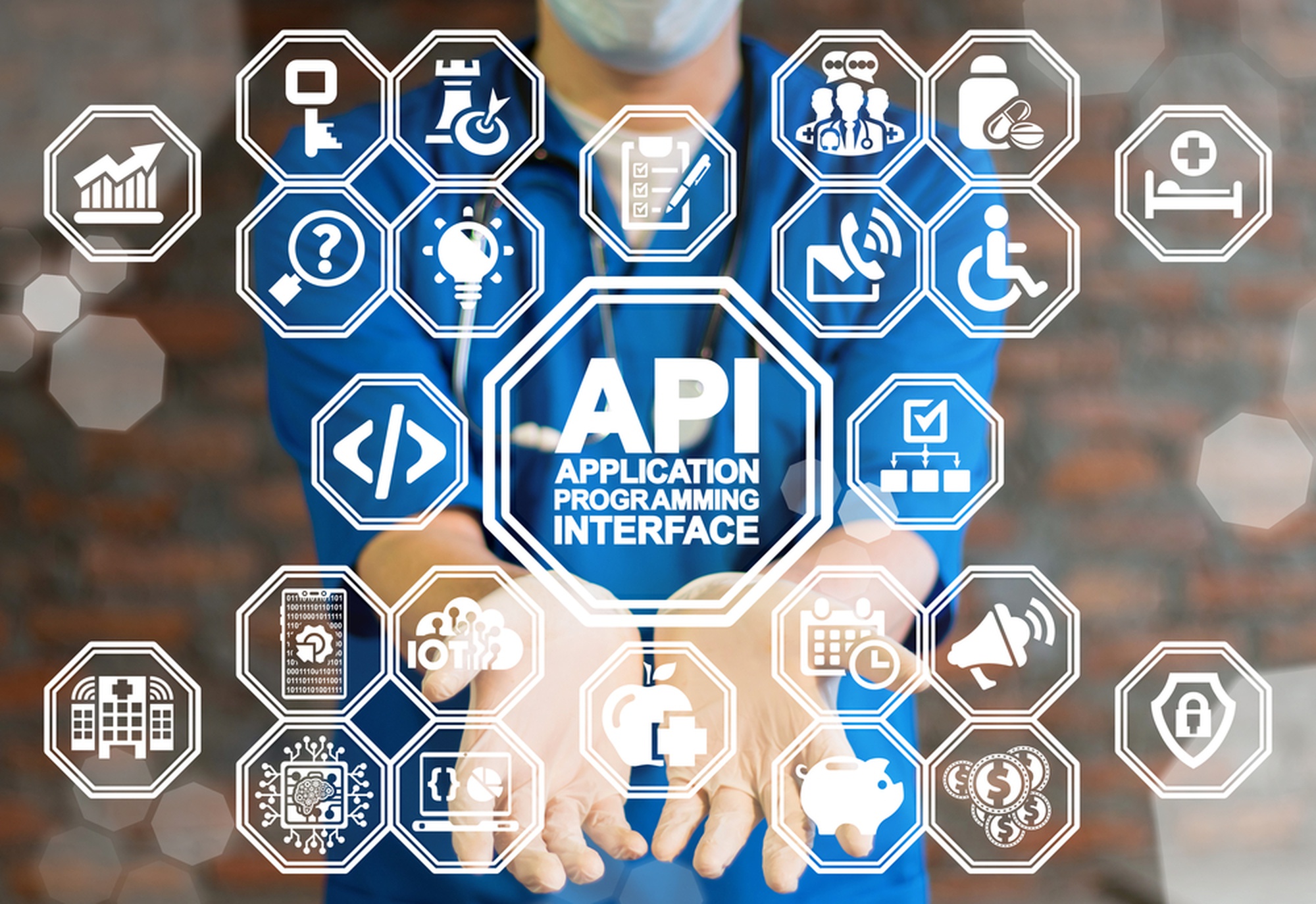Patient satisfaction with telehealth has been declining since 2020, and one of the main reasons is the limited services offered within this model of care delivery. However, you can satisfy your patients and medical professionals by enhancing your telemedicine software with features they want to see.
Thankfully, the best APIs for telehealth apps allow you to upgrade your platform cost-effectively.
An API (application programming interface) is a set of code and protocols that allows software modules to communicate and exchange data. Programming interfaces can help you integrate pre-built services into your telemedicine platform instead of developing them from the ground up.
This article explains how APIs can benefit telemedicine in general and why you would want to integrate them into your software. We'll also go through the common concerns related to using application programming interfaces in hospitals and clinics. And, of course, you'll find out about the most popular APIs for telehealth apps.
How can APIs improve your telehealth software and medical practice?

According to 2021 research by Infogence Global, the global healthcare API market is set to reach $3.93 billion by 2027, up from $2.53 billion in 2021. Plus, the 2020 State of Healthcare APIs survey reveals that 40% of healthcare providers recognize APIs as mission-critical enablers for their business strategies.
This growing popularity of APIs stems from their ability to cut development costs, improve user experience, and streamline processes. But let's not simply list big words. Instead, let's examine in more detail how the best APIs in healthcare can benefit your telehealth platform.
Delivering a better patient experience
Adding functionality into your telehealth platforms gives your patients a holistic user experience. A single app can be all they need for appointment scheduling, checking for insurance coverage, requesting prescription refills, and paying their bills.
Enabling improved care quality
APIs are known to boost the productivity of healthcare providers by 40% by reducing their manual work and making the data more accessible. The right software and application programming interface can help:
-
Integrate EHRs (electronic health records) into the telehealth app so that doctors and nurses can quickly check a patient's health information for telehealth visits.
-
Easily upload recordings and images obtained during virtual examinations to EHRs via mobile devices and web browsers.
-
Avoid duplication of data in telehealth systems and other software and spend less time managing records, treatment plans, and billing data.
-
Gather more information for the CDSS (clinical decision support system) that allows doctors and nurses to analyze potential diagnoses and treatment options for their patients.
-
Quickly check the patient’s reimbursement eligibility for telemedicine visits.
Having all this functionality in one app helps your medical personnel escape from tedious routine tasks and focus on providing quality patient care.
Reducing development costs
The top APIs for telehealth apps allow you to integrate existing third-party services into a telemedicine application instead of spending money on developing these services from scratch. Your developers can also use APIs to migrate the data from legacy systems into modern platforms without designing custom workflows.
Some companies also bundle their APIs with SDKs (software development kits) — software-building tools, libraries, templates, and documentation — to help developers integrate apps into specific platforms. It helps shorten the development cycle when building a telehealth solution.
Facilitating business growth
Healthcare APIs can integrate software for administrative and business purposes. For example, they can add reporting features to measure key performance indicators and return of investment for different groups of patients. In addition, the marketing team may want to have patient engagement tools to identify and target different demographics.
Creating cost-effective infrastructure
About 80% of healthcare APIs are cloud-based, meaning their databases, processing logic, and supporting infrastructures are stored online. According to the 2020 OpsRamp report, 62% of companies consider operational scalability and flexibility the most significant advantages of cloud solutions over on-premise architectures.
When you opt for cloud-based infrastructure, you can use just the right amount of storage and computing power. Beyond that, advanced cloud platforms allow you to scale your storage and resources based on demand. As a result, integrating APIs with your telehealth app might cut your IT expenses.
So, what do these benefits add up to? Healthcare APIs help you improve your telemedicine software using fewer resources, time, and effort. Let’s look at the APIs that deserve your attention.
14 best APIs for telehealth apps

Picking the best API for your telehealth app isn’t easy, considering the large market size and the wealth of available options. So, we analyzed some of the most popular solutions and picked the ones that meet our criteria.
Each API on our list follows the HIPAA (The Health Insurance Portability and Accountability Act) Security and Privacy laws. They also all use robust encryption, comply with the HITRUST, and follow SOC and ISO 27001 standards to keep your data safe. What’s more, most of these APIs come with SDKs, documentation, mappings, and annotated guidelines to help your team implement them into your system.
Without further ado, here are the top APIs to integrate with your telehealth app to make a multifaceted and versatile healthcare platform.
-
CharmHealth API
CharmHealth provides a comprehensive set of RESTful and FHIR-certified APIs designed to fit large hospitals and small private practices. The provider offers solutions for managing EHRs, medical billing, claims, prescriptions, and patient appointments. Most software works on web clients and mobile operating systems. And if that's not enough, it also has handy features like natural language processing for automated note-taking and text processing.
-
Patient360 API
The Patient360 API helps share medical data with over 65,000 care facilities across the US. This software supports the automatic importing of electronic records (including diagnostic images) and bulk downloads for hospitals with many patients. The API also has automatic matching to help aggregate patient information without losing your mind. For instance, it can bring disparate data together and remove duplicate entries.
-
Google Cloud Healthcare API
The Cloud Healthcare API standardizes data exchange between applications built on Google cloud services. This platform also has pre-built connectors for stream data processing (Dataflow), machine learning (Vertex AI), and analytics (BigQuery). As a bonus, Google guarantees that all data stored on its Google Cloud platform adheres to the latest privacy and security practices.
-
Change Healthcare API
Change Healthcare has many easy-to-use tools for telemedicine providers. Some of their best APIs for telehealth apps include Eligibility for patient profiling and reimbursement checkups, InterQual Coordinated Care to manage high-risk cases and complex care plans, and Professional Claims for dealing with claims. We should note that these APIs are offered in a bundle with other solutions designed for telehealth.
-
HealthTap API
The HealthTap Cloud gives various APIs and SDKs to improve your telehealth platform with features like Big Data analytics, text chat, and patient relationship management. But that's not all. The company's REST API adds a comprehensible knowledge library that allows patients to search for answers and second medical opinions.
-
Eligible API
The Eligible API simplifies digital transactions between a telemedicine platform and healthcare plan providers. You get to look up information from over 700 insurance companies to streamline insurance verification, claims, and payment. And, as the name implies, this API can quickly check if the patients are eligible for reimbursement for telehealth visits.
-
CONTUS MirrorFly API
The CONTUS MirrorFly offers an API and SDK package with over 150 collaboration solutions that you can integrate into your web, desktop, or mobile app. This software can enrich your platform with features like messaging, video capture, split-screens renders, and video recording. It also has a secure file sharing feature to help your doctors and patients share medical records, diagnosis images, and prescriptions.
-
Nanthealth Eviti API
The NantHealth Eviti API provides access to diagnoses, procedure codes, and health plans for oncology and autoimmune diseases patients. In addition, its web API comes with modules that help doctors validate clinical decisions with a comprehensible library of evidence-based treatment standards.
-
Human API
The Human API makes it easy for patients to manage their health data from disparate sources. It collects information from hospitals, labs, pharmacies, remote patient monitoring devices, and third-party apps. Doctors get the ability to monitor a patient's physical activity, blood pressure, glucose level, and other metrics to adjust their post-treatment plans.
-
Validic API
Validic's Connect API links your telehealth platform with patients' mobile health applications. This software supports over 350 wearables and popular fitness apps, including Fitbit, Google Fit, iHealth, and RunKeeper. You also get to set up the dashboards, configure measurements, and set triggers for critical alerts for individual patients.
-
DrugBank API
The DrugBank API is a pharmaceutical knowledge base of drug products. This tool includes a robust search engine to help your medical staff to check for side effects, contraindications, and possible reactions between multiple drugs.
-
Truepill Pharmacy API
The Truepill API is a pharmacy-as-a-service solution for patients across the US. You can connect your healthcare app to Truepill's infrastructure to deliver drugs. Or, if you operate your own pharmacy, you can program the API for direct prescription transfers with the company.
-
eFax API
The eFax API is a brilliant way to exchange data with rural facilities and communities that have slow internet speed and paper-based workflows. The programming interface integrates with telehealth, EHR, and other types of software. The app provides you with toll-free fax numbers in over 50 countries across six continents, including the US.
-
Uber Health API
The Uber Health API is a lifesaver for cases when remote examinations won't do. This technology replaces expensive shuttle services with efficient Uber rides that physicians can schedule and track in real-time inside your healthcare app. This software integrates with agetech platforms and supports SMS messaging for elderly patients who don't own smartphones or never used the Uber app.
Our list has introduced you to popular third-party APIs to integrate into your telehealth app. But that leaves us with one more important topic: the challenges you might face as you add APIs to your platform.
Common challenges with healthcare APIs

Despite the popularity of APIs in healthcare for providing solutions, their implementation introduces healthcare providers and developers to other kinds of problems. So, let's address the most common ones you might face.
Data security
Security is one of the biggest challenges for the industry. The 2021 Bitglass' Healthcare Breach Report shows that healthcare companies in 2020 suffered 599 breaches and over 24.1 million exposed records (55% more than in 2019). About 67% of these breaches were the results of hacking. And that’s not even the worst part.
According to Gartner's 2019 API Security report, 40% of hacker attacks come through web application APIs. Forbes states that API requests constituted 53% of all web-targeted hack attempts in the first two quarters of 2020. And, if Gartner's is correct, the abuse of programming interfaces will soon become the most common attack vector.
How can you keep your patient data and business information safe? When picking top APIs for building your telehealth app, you should check if they leverage encrypted communication protocols (AES, SSL, or RSA 256-bit) and key-based authentication for access requests. Larger companies might consider on-premise programming interfaces that limit external threats at the cost of the scalability the cloud-based solutions are known for.
Regulatory compliance
Compliance with HIPAA is the third biggest barrier for healthcare companies. EHRs contain personally identifiable information about patients and medical staff. That's why failing to protect this data or violating HIPAA may lead to $50,000 penalties (up to $1.5 million per year).
However, the legislation doesn't end with HIPAA. Those who offer telemedicine services should monitor rules issued by the Centers for Medicare & Medicaid Services, the Office of the National Coordinator for Health Information Technology, and local (state-level) regulators. Moreover, you should ensure that APIs that process credit card and bank information adhere to PCI DSS.
As a rule of thumb, the best telemedicine APIs comply with all these regulations and follow security standards. But your developers should thoroughly investigate the APIs before integrating them with your platform. Also, you can use compliance management modules to ensure your software aligns with industry regulations.
Standardization and interoperability
The 2019 HIMSS Media report says that every fourth healthcare organization lacks interoperability — the ability to share medical data between software, facilities, and organization. In response, the regulators have developed a series of standards for EHR platforms.
About 61% of healthcare software companies have adopted FHIR (Fast Healthcare Interoperability Resources), which seems to be the most common standard for exchanging medical records. Meanwhile, over 64% of providers prefer the EDI (Electronic Data Interchange) standard. However, there’s still no industry-accepted standard for application programming interfaces.
API adoption
The adoption of APIs has been inconsistent. One study shows that although 73% of healthcare providers use APIs, only 53% leverage them at a larger scale. Plus, only 24% of health plan providers and 29% of software companies rely on APIs for essential business operations. What does that mean for your facility?
The adoption of standards-based APIs would result in more organizations exchanging EHR data. Besides, it would help the plan providers to comply with interoperability regulations. But the silver lining is that adoption is escalating. If forecasts are correct, then 67% of hospitals, 61% of plan providers, and 51% of healthtech vendors will use healthcare APIs at scale by 2023.
Development experience
The knowledge of how to use APIs and their underlying infrastructure is a significant barrier for hospitals and clinics (29%) and plan providers (35%). It's even more surprising that nearly half of healthcare tech companies also struggle with APIs.
Healthcare is a complex industry with many niche scenarios and complexities between stakeholders. Experience plays a vital role in healthcare software development much more than anywhere else. The point is that not every developer knows what doctors, nurses, and patients need from a telemedicine app. Consequently, most will have a vague idea of which APIs are best for your telehealth app.
Working with a seasoned developer of healthcare solutions solves most of the challenges described above. They understand the importance of security, interoperability, and compatibility. More importantly, a company with relevant projects under its belt is more likely to identify your pain points and help to solve them cost-effectively with the best APIs.
To sum up
Healthcare APIs can help you update your software with features that patients expect to see in a modern telehealth app. The new technological capabilities can also assist your medical personnel, reduce manual work, and, ultimately, improve patient care quality. And the best part: APIs allow developers to enhance your telehealth app with the least financial resources, effort, and time.
But be cautious when selecting application programming interfaces for your hospital. Subpar software may only complicate your workflows or be incompatible with your EHRs. It may even introduce security vulnerabilities and compliance issues you want nowhere near your facility.
Want to update your telehealth platform with convenient, secure, and interoperable software tailored for your needs?
Demigos can help you find and integrate the best APIs with your telehealth app as cost-effectively as possible. Contact us to learn more about our healthcare projects and software development services.






